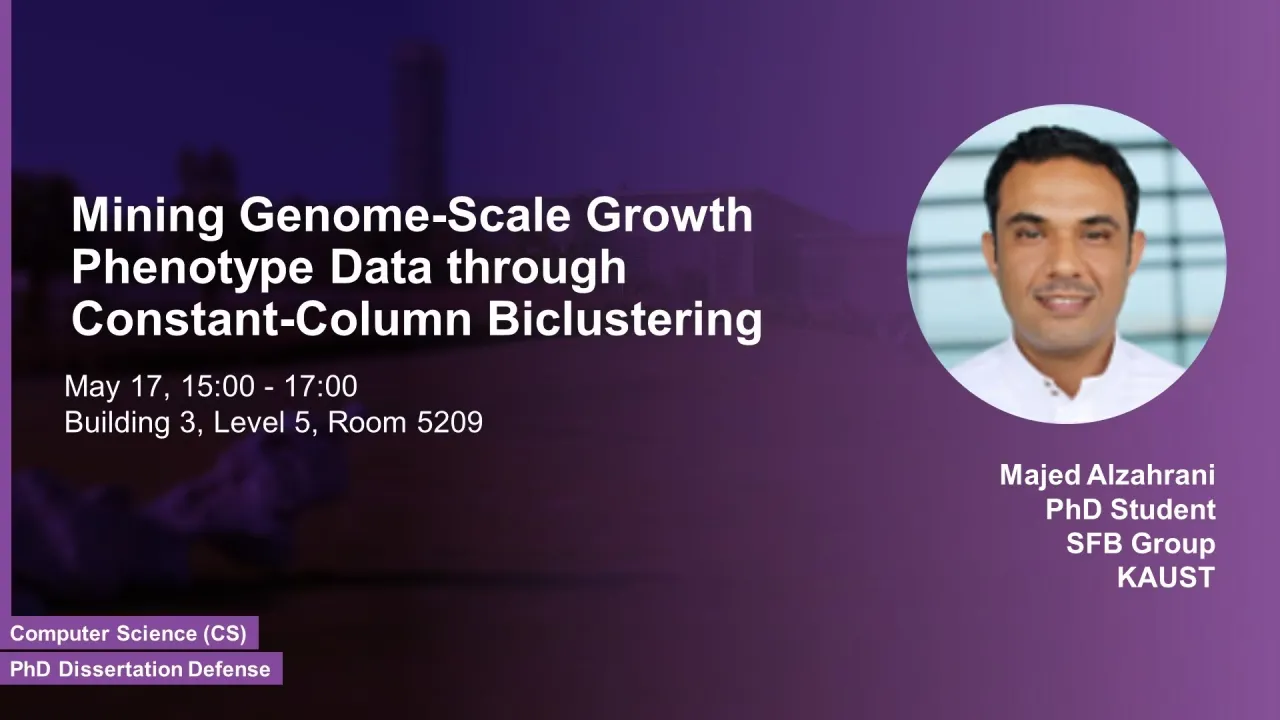
Mining Genome-Scale Growth Phenotype Data through Constant-Column Biclustering
B3 L5 R5209
Growth phenotype profiling of genome-wide gene-deletion strains overstresses conditions can offer a clear picture that the essentiality of genes depends on environmental conditions. In this dissertation, we first demonstrate that detecting such "co-fit" gene groups can be cast as a less well-studied problem in biclustering, i.e., constant-column biclustering. Despite significant advances in biclustering techniques, very few were designed for mining in growth phenotype data.
Overview
Abstract
Growth phenotype profiling of genome-wide gene-deletion strains overstresses conditions can offer a clear picture that the essentiality of genes depends on environmental conditions.
Systematically identifying groups of genes from such recently emerging high-throughput data that share similar patterns of conditional essentiality and dispensability under various environmental conditions can elucidate how genetic interactions of the growth phenotype are regulated in response to the environment.
In this dissertation, we first demonstrate that detecting such "co-fit" gene groups can be cast as a less well-studied problem in biclustering, i.e., constant-column biclustering. Despite significant advances in biclustering techniques, very few were designed for mining in growth phenotype data. Here, we propose Gracob, a novel, efficient graph-based method that casts and solves the constant-column biclustering problem as a maximal clique finding problem in a multipartite graph. We compared Gracob with a large collection of widely used biclustering methods that cover different types of algorithms designed to detect different types of biclusters. Gracob showed superior performance on finding co-fit genes over all the existing methods on both a variety of synthetic data sets with a wide range of settings, and three real growth phenotype data sets for E. coli, Proteobacteria, and yeast.
Brief Biography
Majed Alzahrani is a Ph.D. student at King Abdullah University of Science and Technology (KAUST). He received his BS degree in Computer Science from King Abdulaziz University (KAU), in 2000 with first class honors. He received his MS degree from the Department of Computer Science (KAUST) in 2012. His research interests include data mining, machine learning, and computational biology. He has been working for Aramco as a petroleum engineering systems analyst, in which he worked in a number of solutions in the fields of process automation, budget forecasting, and document management.

